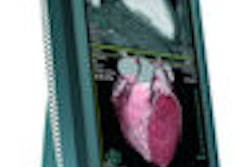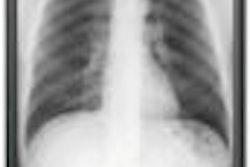A little more than a year ago, I wrote an article on the impact of the Deficit Reduction Act (DRA) of 2005 and PACS. The article, Part XIX of my Exploring PACS Secrets series, made the case that the DRA was the best thing that ever happened to the PACS marketplace.
To see if my DRA hypothesis was right, one of the major PACS vendors recently decided to study the experience of one of its customers: Clinton Memorial Hospital, a 150-bed regional community hospital in Wilmington, OH.
Serving a population of slightly less than 44,000, Clinton Memorial is representative of the typical regional community hospital that makes up seven out of 10 hospitals in the U.S. today. It went live with PACS in February 2005.
“Every business has had to adjust to the economy -- why should healthcare be any different?”
The study took a close look at two areas: reimbursement and film use. Almost 58,000 procedures were individually analyzed by the researchers, who compared both 2007 volume and actual Medicare reimbursement against actual 2008 reimbursement (after the DRA went into effect), including DRA adjustments for contiguous body parts (CBP) on a case-by-case basis.
Although much of what I said in my article was borne out by the analysis, some of the results of the study amazed even me. The institution experienced a 90% increase in reimbursement in certain nuclear medicine studies, as well as no reduction in reimbursement in key CT and MRI studies performed at most of its diagnostic imaging centers. The biggest financial hit was in CBP reimbursement reduction effects, which led to an average loss of 25%.
As for film costs, Clinton Memorial saved almost $600,000, including $400,000 in savings from CT and MR alone.
As expected, the DRA had the biggest effect on CT, with slightly less than one in three cases negatively impacted by the reimbursement changes. Interestingly, the vast majority of this reimbursement "loss" was offset by film cost savings.
MRI was affected by the DRA in about 9% of all cases, with computed radiography (CR) and other modalities either not impacted at all or minimally impacted. Overall, just 8% of all cases had DRA-related adjustments, both positive and negative.
After exceptionally high growth in procedure volume in fiscal year (FY) 2004-2005 and overall double-digit increases in procedures in FY 2005-2006, volume leveled off in FY 2006-2007 and 2007-2008. The one exception was a 35% decline in CT in 2007, largely due to increased competition. The declines reversed themselves in FY 2008-2009, with procedural volume increasing slightly and revenues stabilizing.
Reimbursement actually went up 11.5% from FY 2007 to FY 2008 due to increased Medicare reimbursements. CR showed a 5% gain in procedural volume at the hospital, which is unusual when you consider most general radiographic procedures decreased nationally from 2% to 5% per year on average. Consequently, CR revenue increased 7.2%, with Medicare increases factored in.
CT revenue increased almost 3.1%; however, when the DRA impact was factored in and adjusted for items such as contiguous body parts, net revenue dropped almost 12.2%. MRI showed the same type of results, although not as dramatic -- a 1.7% increase reverted to a 2.5% loss overall when the DRA was factored in.
Nuclear medicine was the biggest surprise -- a 59% increase in reimbursement was virtually untouched by the impact of the DRA. The same held true for angiography/interventional radiology (47% increase) and PET and radiography/fluoroscopy (a 32% and 34% gain, respectively). Unfortunately, each of these modalities only averaged a few dozen procedures per month.
Hurting CT
What is the takeaway message from all this? While this is the experience of only one institution, the DRA seems to hurt CT the most, benefit nuclear medicine the most, and affect the other imaging modalities relatively little. Overall, reimbursement at Clinton Memorial Hospital showed an 11.5% increase, and even when the losses incurred by CT were adjusted against the gains of nuclear medicine, the radiology department still showed a 5.1% overall gain.
Now, losing over 6% net revenue from CT is nothing to sneeze about, but it's not something you slit your wrists over either. Besides, being able to do more with less is a hallmark of PACS.
One of the bigger revelations from the study was that very few people really seem to understand the DRA. The contiguous body part reduction (CBPR) is only used for exams that fit into certain categories (Medicare calls them "families") and are performed in the same session.
- Example 1: A CT head and a CT neck study performed in the same session (based on date and time of exam) are reimbursed at 100% for the more expensive study and 50% for the less expensive one due to CBPR.
- Example 2: A CT head and a CT neck exam performed in separate sessions (based on date and time of exam) are each reimbursed at 100% because CBPR doesn't apply for separate sessions.
- Example 3: A CT head and a CT chest exam performed in the same session are each reimbursed at 100%, as they are not part of the same category/family and each requires separate setup and patient positioning.
- Example 4: An abdominal ultrasound and a carotid ultrasound performed in the same session are each reimbursed at 100%, as the carotid ultrasound is not among the exams identified by Medicare.
There are 11 CBP families -- five CT, five MRI, and one ultrasound -- where exams performed in the same session qualify for reduced payments. Everything else ostensibly remains the same, although there is discussion now to further reduce some payments.
Interestingly, while the DRA had the greatest effect on CT (12% loss), much higher revenue generators such as MR were minimally impacted (2.5% net loss), primarily because a chest/abdomen/pelvis (C/A/P) CT is a frequently ordered exam and MRI and MR angiography studies are less frequently ordered.
CR, which generates the lowest of all the revenues, showed net gains of 7.2% primarily because the CBP formula did not apply to these studies. MR showed a 2.5% loss, while ultrasound, which generates a little less than half of the revenue of CT, was a consistent revenue generator.
Increasing overall revenue
Now let's be pragmatic. Yes, it's terrible to lose any net revenue, but Clinton Memorial Hospital actually increased overall reimbursement. CT and MR lost, nuclear medicine gained, ultrasound was untouched, and the bottom line was positive.
Yes, losing more than 12% of your net CT revenue isn't good if you look at this from a CT-only perspective. However, nearly 90% of CT revenue remains untouched by the DRA. While Clinton Memorial might be the exception rather than the rule here, even a 10% shift would only reflect a 5% "loss" overall, savings easily made up by other areas not addressed by the study.
Professional fees also aren't affected by the DRA, so while radiologists may be some of the loudest voices against the DRA, it really only affects them if they own or are investors in an imaging center, and then only minimally.
I can see why an outpatient imaging center that does mainly CT scans would be concerned about the DRA's impact, as 25% to 33% of the studies can be C/A/P. In addition, 2009 reimbursement further reduces payout another 50% on the third contiguous body part.
That said, the amount of time required to do the exam really doesn't change, at least with most of the newer high-speed scanners, nor does the technical component. Fixed costs remain ostensibly the same, at least if they have newer modalities. The same can be said for operational costs. Only reimbursement changes.
So why the crocodile tears? A smart center will take what it can get and be thankful for it. Yes, they may get $350 for an exam that used to bring $600, but it's still $350 more than if they didn't do the exam at all, or $350 less than if the study were done by a competitor up the street. Every business has had to adjust to the economy -- why should healthcare be any different?
PACS also allows you to gain 20% to 25% productivity without affecting bottom line costs. Although a facility may be netting slightly less, it can also do more procedures without impacting the bottom line.
I found a paper online that really cuts to the chase here. Conducted at Massachusetts General Hospital and Harvard Medical School in Boston more than a decade ago, the study found that the cost of hospital overhead exceeded the costs of procedures. The average cost per procedure was around $100 when using either relative value unit (RVU)-based or exam-based methods, or about $185 on average when factoring in overhead costs (Radiology, January 2001, Vol. 218:1, pp. 172-175).
Even factoring in inflation from when the study was performed, costs are still below the average DRA reimbursement. Where we have gotten into trouble is counting on RVUs. Individual RVUs for chest, abdomen, and pelvis CT were just under $200 each, hence a C/A/P CT would provide reimbursement of around $600.
The 2008 DRA changes reduce two of these three charges by 50%, bringing total reimbursement down to $400. The 2009 DRA changes will reduce the two concurrent procedures even further to 25% each, bringing reimbursement down to $300.
The pessimist will see this as losing 50% of reimbursement, going from $600 per procedure to $300. The realist will see this as paying for exam costs, operating expenses, and overhead, leaving them with around $100 in net profit.
Also keep in mind that when this study was conducted, the average CT could do an average of two procedures per hour. The newer higher-slice scanners can easily double that throughput today, making procedural volume increases easier to attain as well. In addition, professional fees have remained untouched, which is a plus for radiologists who contract out their services.
This study also didn't address things like full-time equivalent savings, space savings, or other related areas, but these are usually offset anyway by system costs, administrative costs, service, and other areas. The three-year return-on-investment (ROI) shown at Clinton Memorial seems a bit aggressive, but I have seen some PACS ROIs that were less and some that were more.
Crying wolf?
So are we crying wolf with the DRA? I'd probably be shot if I said yes, but were I to base the results on this single study, I feel confident in saying that as an industry we were certainly being a bit of a drama queen.
A year ago, I made this statement:
Company executives, large and small alike, continue to use the DRA as their 'dog ate my homework' excuse for poor sales or poor margins, quarter after quarter. That should not be the case. Thankfully, a few companies have shown that they know how to sell in these trying times by being creative and educating their customers on the benefits of PACS.
Is this still happening? Indirectly. No doubt the lagging economy continues to play a role in slow sales, but frankly, at least from my perspective, customer education -- or a lack thereof -- plays a much larger role in the decision-making process.
If people understood the role the DRA plays (or doesn't play, in this case), they would be more apt to make a decision to get into PACS or, if they already have PACS, to optimize its use. People may also not be buying as quickly as they should, or even as much as they should, but when you look closely, people are buying.
Unfortunately, many are buying on price alone, rather than focusing on how a system meets their operational requirements. The first thing that seems to go in a competitive market is margins. It's a catch-22 -- you buy cheap and get a great deal, until the company isn't in business very long because it simply can't sustain itself on razor-thin or negative margins.
I also stand behind my statement made a year ago: "PACS allows you to play much better than anyone else when dealt a hand you've never seen before." The results at Clinton Memorial seem to bear this out quite well. However you cut it, the bottom line still remains the bottom line and the DRA really does have a minimal impact.
By Michael J. Cannavo
AuntMinnie.com contributing writer
April 14, 2009
Michael J. Cannavo is a leading PACS consultant and has authored nearly 300 articles on PACS technology in the past 16 years. He can be reached via e-mail at [email protected].
The comments and observations expressed herein do not necessarily reflect the opinions of AuntMinnie.com, nor should they be construed as an endorsement or admonishment of any particular vendor, analyst, industry consultant, or consulting group. Rather, they should be taken as the personal observations of a guy who has, by his own account, been in this industry way too long.
Related Reading
Building a Better PACS: Part 2 -- Standards, guarantees, and flat-rate pricing, February 19, 2009
Building a Better PACS: Part 1 -- Making it work for end users, February 2, 2009
The 2008 PACSman Awards: I shaved my legs for this? December 4, 2008
The Anthology of PACS Secrets, September 9, 2008
Part XX: Exploring PACS Secrets -- Will PACS survive? July 22, 2008
Copyright © 2009 AuntMinnie.com



















